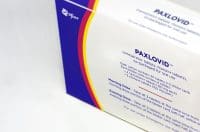WHO continuing to monitor, says BA.2 “not a variant of concern” yet
The latest COVID-19 variant is now beginning to exhibit variants of its own – but the effects are still largely unknown.
Omicron variant BA.2 is now reported in roughly half of the U.S. states. Other countries, such as Demark, have reported upwards of 50,000 cases in a single day – although the country is home to less than six million people.
The initial Omicron strain (known as BA.1) is known for its high rate of transmission, but scientists believe BA.2 may be 50 percent more transmissible.
“We conclude that Omicron BA.2 is inherently substantially more transmissible than BA.1, and that it also possesses immune-evasive properties that further reduce the protective effect of vaccination against infection,” researchers in a Danish study said.
The study was conducted by researchers at Statens Serum Institut (SSI), Copenhagen University, Statistics Denmark and Technical University of Denmark.
“If you have been exposed to Omicron BA.2 in your household, you have 39 percent probability of being infected within seven days. If you instead had been exposed to BA.1, the probability is 29 percent,” lead study author Frederik Plesner told Reuters.
Thus far, however, there is no evidence that BA.2 produces more severe symptoms than BA.1. In an initial assessment, BA.2 doesn’t appear to reduce the effectiveness of vaccines any more than the original Omicron variant.
A booster dose was 70 percent effective at preventing symptomatic illness from BA.2 two weeks after receiving the shot, compared with 63 percent effectiveness against the original Omicron strain, according to a CNBC report.
BA.2 can be harder to detect via a conventional COVID test and has therefore been deemed a “stealth” variant. The World Health Organization (WHO) continues to monitor its spread but has yet to declare BA.2 as a “variant of concern.”
SOURCES: Reuters, CNBC


















